A trip to a place known as the Land of Dim Sum will not be complete without trying out the much raved about delectable and dainty portioned cuisine, hailing from its Cantonese origins.
(I have previously blogged about the history of dim sum in one of my older posts in my old food blog, but I wouldn't mind sharing it again here).
History of Dim Sum
Dim sum originated from the days in the past for the road travelers of the Silk Road.Journeys are long and daunting, and stopping for breaks are common along the road.
Opportunistic traders jumped at the chance of making a quaint living for themselves and starting setting up stalls for the travelers to sit down, catch their breaths and enjoy a cup of tea.
(Basically the concept of R&R in the older days).
These soon turned into teahouse lodges; providing accommodations and tea, of course to the weary travelers needing rest before continuing on the long journey.
Before long, it was also when the witty teahouse owners started adding snacks to accompany the tea served on the menu as part of the package, especially after it was found that tea was proven to aid in digestion and would complement food well.
It was an opportunity and a good marketing strategy, especially when you have well-proven medical testimonials for the tea and digestion.
The food served in these teahouses were in the forms of snacks, and bite-sized, for the travelers to enjoy and yet economically friendly to their money pouches
.
The trend of serving these petite sized delights evolved into a culinary art started by the Southern Chinese; or the Cantonese clan especially in the Guangdong province which continued in its revolutionary spin to the very sights that greet us at our dim sum table today.
Another variant of the origin of dim sum was from the Imperial Palace where the Imperial chefs would experiment with various types of food to serve the royal family; and please the Emperor throughout the day. Their attempts to create varieties in colors and multitudes of tastes to suit (and attract) the royal appetites resulted in various forms of creativity in their food presentation.
Dim sum was created as part of the snacks in between the major meals, and as they were a result of the hard work and tremendous efforts to please the royals or whoever ate them, the name Dim Sum or Tian Xin (点心) in Chinese was born, which literally means "little heart" is apt to describe the beauty of the art involved in its creation.
The dim sum trend continues to captures the interests and appetites of epicureans till this very day, for the very same reason; their presentation and the delicate size, not to mention its exquisite taste.
While it evolved from its original intention as a snack for royals or travelers, today dim sum is more of a hearty and loud affair, often involving families, friends in large gatherings especially on weekends.
It is a meal of happiness, staying true to its name and many have even termed it as a verb, often referring to it as an activity, "yum cha" (directly translated as drinking tea) which also owes to its origin from the tea drinking at the teahouses.
Hong Kong is not known as the Land of Dim Sum for no apparent reason, for its proximity to Guangdong and the migrating Cantonese to this land which brought along with them that intricate art of delicacy which have revolved into more than just merely food to fill the stomachs or over loud banters at the table.
Dim sum is an elegant and fine cuisine, and is meant to be savored with its every bite and many chefs have been pitting against each other in their skills to make the best dim sum; judged by their refined tastes, appearances and even in the graceful form of its presentation and size.
The ambitions of Chef Mak Kwai Pui, formerly from the well-renowned Lung King Heen of Hong Kong; one of the Michelin 3-star restaurants in the city, to make his very own version of this delicacy led to the birth of his own humble outlet in Mongkok in the year 2009.
It started with a modest 20 seater in a compact space in the busy district of Mongkok, but it was his very own venture to start off the business.
Who would have thought that this minuscule business would lead to a viral frenzy around the country where it led to outlets opening one after another, to its total of five branch outlets within Hong Kong itself in a short span of time?
From 2009 to today, Chef Mak Kwai Pui is proud that his starting point in Mongkok (which have since relocated to Olympian Point in 2013 due to the rent) is no longer modest as he has even expanded his culinary art outside Hong Kong.
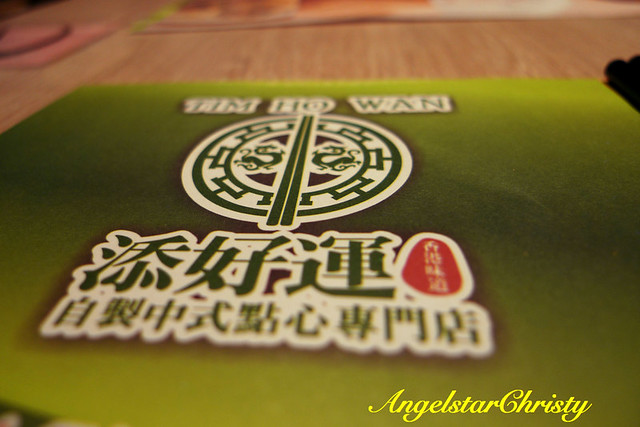
That is the story of Tim Ho Wan(添好運), the brainchild of the named Chef Mak Kwai Pui which has today landed in seven countries outside Hong Kong, saving these nationalities a trip to Hong Kong to savor its award-winning dim sum in the city of origin.
The Philippines, Singapore, Indonesia, Australia, Taiwan, Hanoi and Malaysia are all proud hosts of this famous dim sum outlet from Hong Kong.
Tim Ho Wan's popularity stems from its delectable dim sum; with its few stars to steal the show and it led to the restaurant being named as a Michelin one-star; the first of its kind to have attracted the attention of the famous food guide.
While there were saying that Tim Ho Wan's Michelin rating was due to Michelin's attempt to refute the claim that they were only focusing on the elite and lavish dining and have lost touch with local tastes, Tim Ho Wan has proven that they truly deserved their star with their offerings.
With its affordable prices and down-to-earth menu, it is no wonder Tim Ho Wan is a crowd magnet and is touted as the World's cheapest Michelin-star restaurant.
What better way to round a trip to a Land of Dim Sum if not a visit to this famous chain restaurant, especially since we were right there in the land of its origin?
Tim Ho Wan has landed on our Malaysian shores late last year, in 2014, with its premier outlet in Mid Valley which has been brimming with crowds on a daily basis.
(I did not visit the outlet in Malaysia, though, but I am glad I visited the one in Hong Kong :-) )
I was quite fortunate to avoid the queues as we were led straight into the restaurant when we arrived, though the crowds arrived shortly, standing in queues.
(It must be my lucky day!)
The restaurant goes by a first-comes-first-serve basis, since they have to cater to a large crowd
(yes, the crowd grows by the hour and is at its peak at lunch or dinner hours)
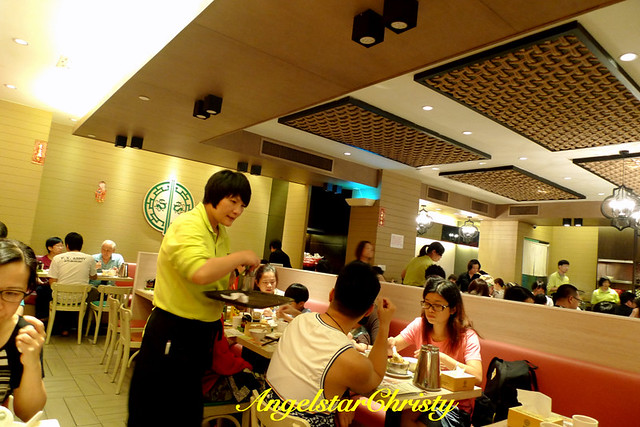
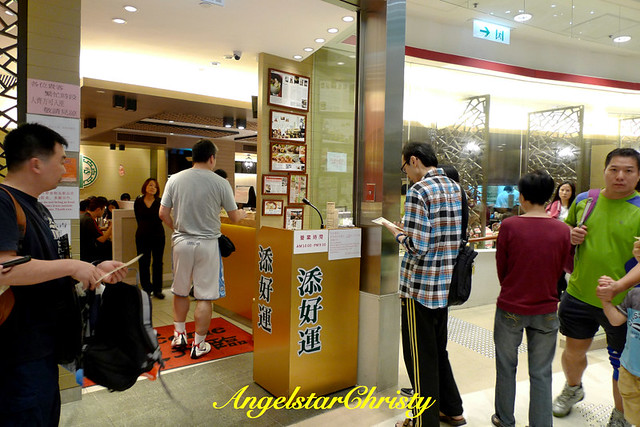
The menu in Tim Ho Wan is all but a modest one, and they boasts of their Big Four Heavenly Kings(添好運 四大天王) which are the highlights of their reputation.
The four are:
1. Baked Bun with BBQ Pork (酥皮焗叉燒包)
2. Vermicelli Roll stuffed with Pig's liver (黃沙豬潤腸)
3. Pan Fried Turnip Cake (or Radish/Carrot cake as known locally) (香煎蘿蔔糕)
4. Steamed Egg Cake (香滑馬來糕)
We went with our own preferences, though we did order at least 2 of the four.
Baked Bun with BBQ Pork (酥皮焗叉燒包)
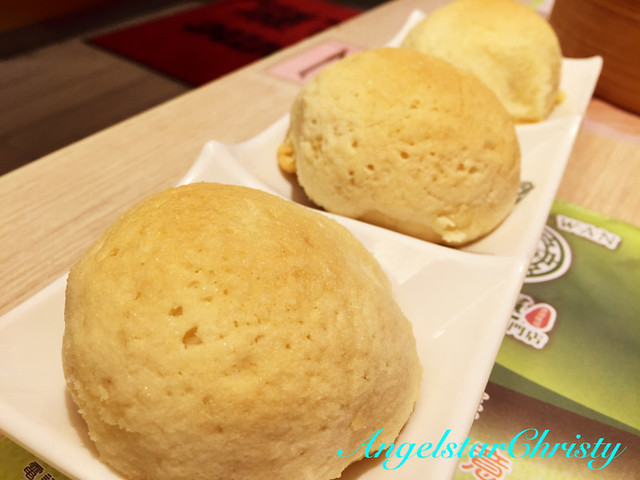
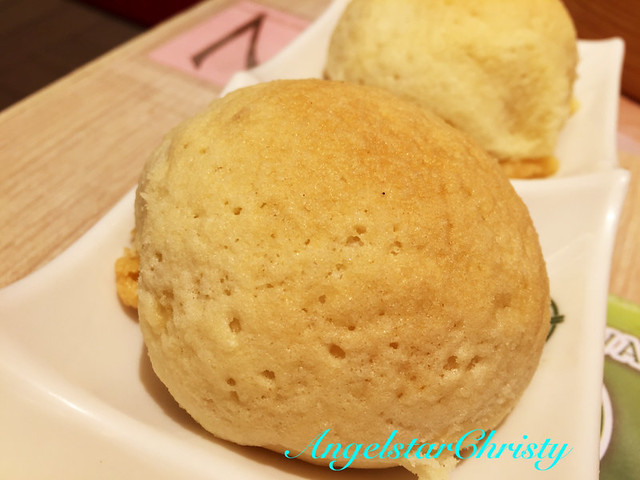

I am not big on this, but this stood out among the usual white kneaded dough of a soft bun revolutionized into its soft flaky crust with a pleasant aromatic egg flavor on top.
While the outer crust may mislead one into that momentary fantasy of pastry tastes, it is the bite into the bun which tops the combination with its oozing gravy marinating the barbecued pork slices.
(I'm not the one testifying to this as this is not my kind of food, but these are based on the photos and sight and of course, the description from my tasting hubby)

It is not hard, at all, to see why this could be the pride of Tim Ho Wan and the reason for its position on top of the list.
This is not your ordinary Char Siew Pao.
This is Tim Ho Wan's trademark.
This, is innovation.
My personal favorite is the other Heavenly King, in its simplest form.
Steamed Egg Cake (香滑馬來糕)


This, is my kind of food.
I love steamed egg cakes of sorts, and this is the Malay Kueh (馬來糕), or so, as it is pronounced in Cantonese.
Soft, spongy with a light bouncy texture yet with that faint caramelized taste with a mild hint of egg, there is nothing I could find wrong with this cake and is probably one of the best I have tried, in my personal humble opinion.
As I am a fan of steamed cakes, or egg cakes, I am particularly picky with most of the cakes I have tasted; with some being too heavy on the flour tastes or just simply too sweet, just to name a few, and I am surprised by this, which left me with no reason to even pick on it.
If I have to really find fault, I would say that it is much better when it is served hot and must be savored immediately, definitely not when it is cold.
Anyway, why would anyone wait when the sight of this fluffy cake is just sitting there in its plush fashion to tempt one to taste?
I wonder.
While many fawns over Siew Mai and Char Siew Pao, I am all over the Steamed Shrimp Dumplings or Har Gao(蝦餃) when it comes to dim sum.
This is a definitely a must have, and is my item to measure the standard of the restaurant.
Translucent skin with that right thin texture that melts right in the mouth harboring the juicy freshness of the shrimps with a burst of scrumptiousness with that bite, is just what I am looking for in most of my Har Gao standards.
Har Gao(蝦餃)
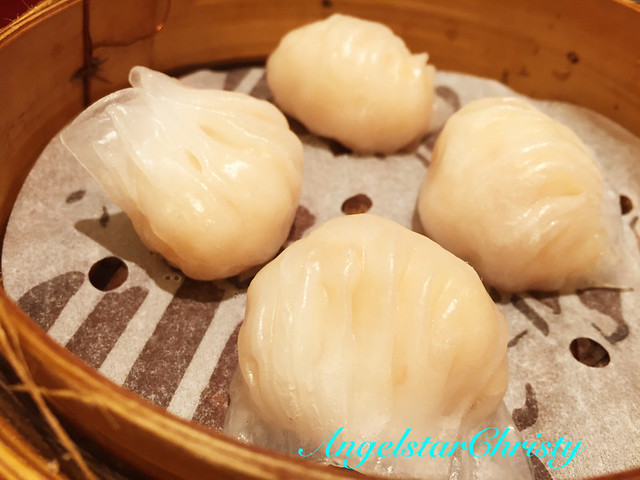

While not the best I have tried, this still did not disappoint.
When there's Har Gao, there's always, always Siew Mai.
That is the commandment.
Siew Mai (燒賣)
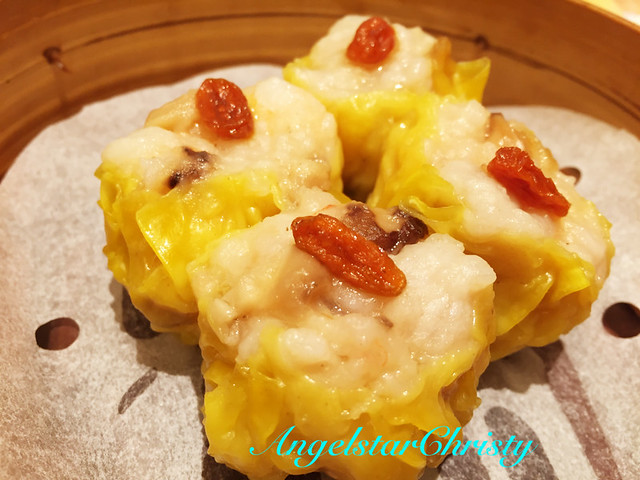
Vermicelli Roll stuffed with shrimps
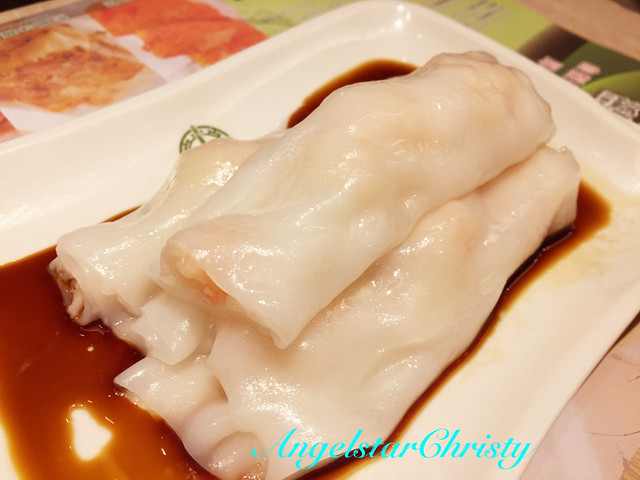

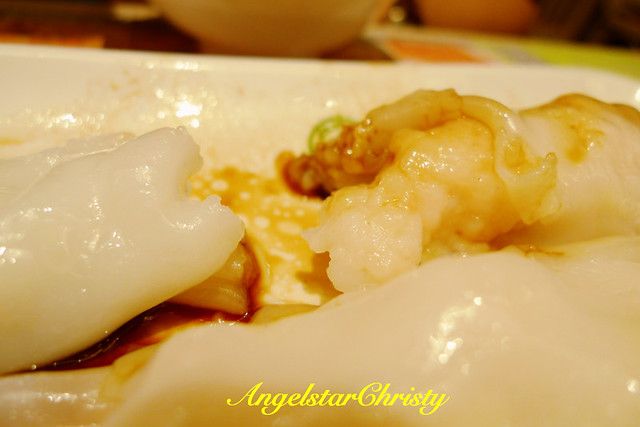
My dim sum meal was polished with my favorite
Osmanthus Cake (桂花糕)

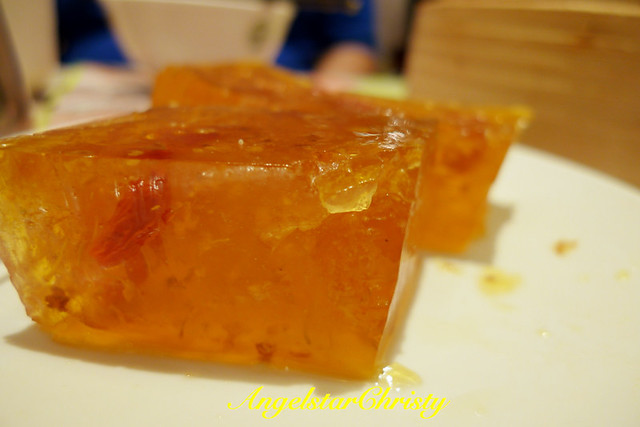
Winter melon with barley in sweet soup
This may be a seasonal item, or only available in Hong Kong
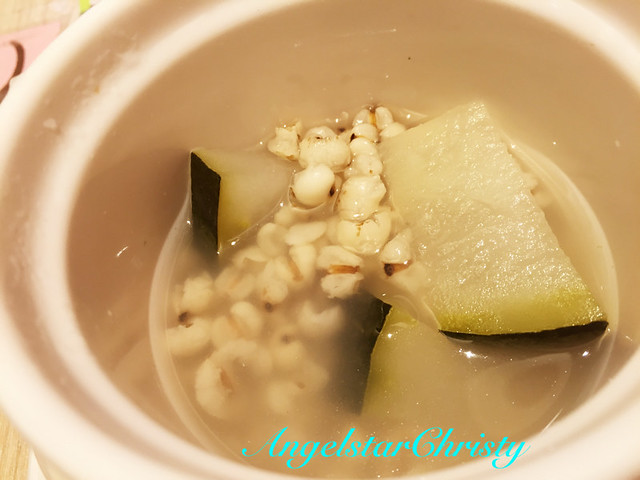
I love the refreshing and soothing taste of this sweet soup, which is not overbearingly sweet and definitely will please those with low tolerance for sweetness (i.e me), yet delightfully tasty for those with a sweet tooth.
It is also a cooling remedy to reduce the body's internal heat, as often practiced in Chinese medicinal concepts in that balance of hot and cold to reduce health ailments.

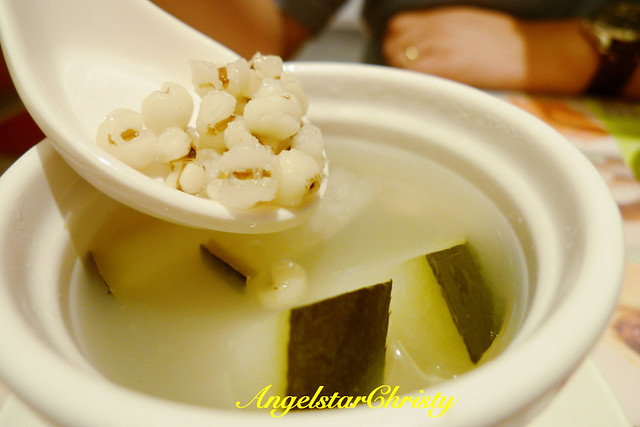
I am not sure of the other reviews or others' experiences, but mine has been a satisfactory one.
I think Tim Ho Wan deserve their reputation and their Michelin 1-Star and I look forward to returning for my next round, maybe they will add more to their menu and maintain their standards.
(We enjoyed our meal so much that we actually dined there twice during our short trip, hence the number of food you see all shared in this one post).
With innovative style and tastes, it is no wonder that Tim Ho Wan attracted the Michelin star within a year after its opening in 2009 (they were awarded Michelin One-star in 2010) and expanded to more than ten outlets within the country and outside the country in a mere span of years.
It is an impressive achievement and one that I am sure will soar to greater heights.
Chef Mak Kwai Pui must be proud, I am sure.
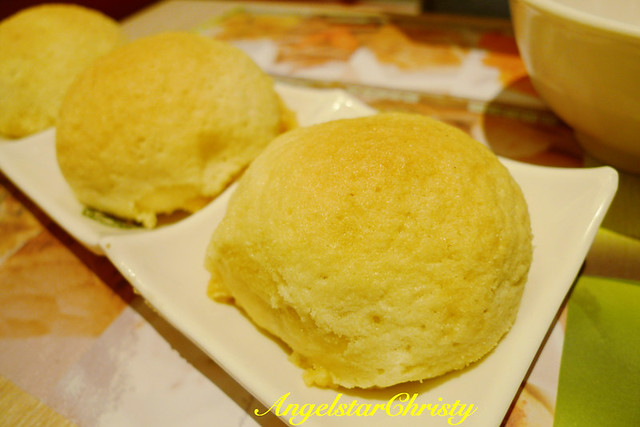
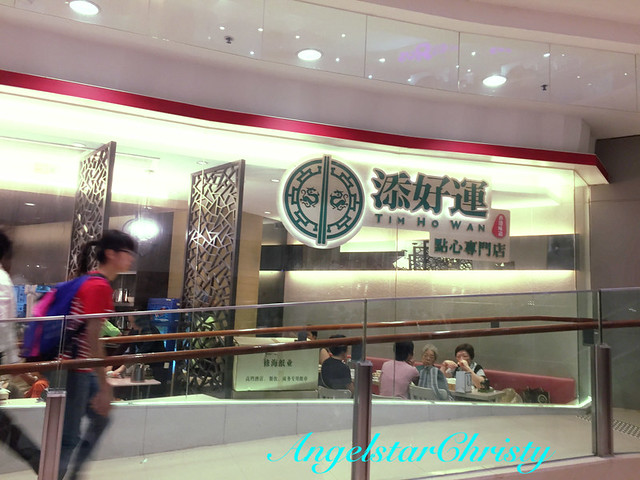
Location of Tim Ho Wan in this post
Tim Ho Wan Outlet in Popcorn Mall, Tseung Kwan O (branch)
Other outlets in Hong Kong:
1. Olympian Point (Original outlet moved from its pioneer Mongkok startup)
2. Central
3. North Point
4. Sam Shui Po
5. Tai Kok Tsui
Other countries and their outlets:
1. Singapore - Plaza Singapura
2. The Philippines - SM Megamall in Metro Manila
3. Australia - Chatswood
4. Jakarta - Ruko Crown Golf, Blok D No. 8-10, Bukit Golf Mediterania, Jl. Raya,, Marina Indah, 14470, Indonesia
5. Taipei - 1F, 36, Zhongxiao W Rd Sec 1, Taipei City (台北市忠孝西路一段36號1樓)
6. Kuala Lumpur - Mid Valley Megamall
*Note:
This is not a sponsored post, and solely based on author's personal opinions, tastes and preferences and do not represent the general public. Experiences vary from one individual to another.
LIKE my Facebook Page
Follow Me on Twitter @Angelstar
Follow my Google+
Stalk me on Instagram @AngelstarChristy

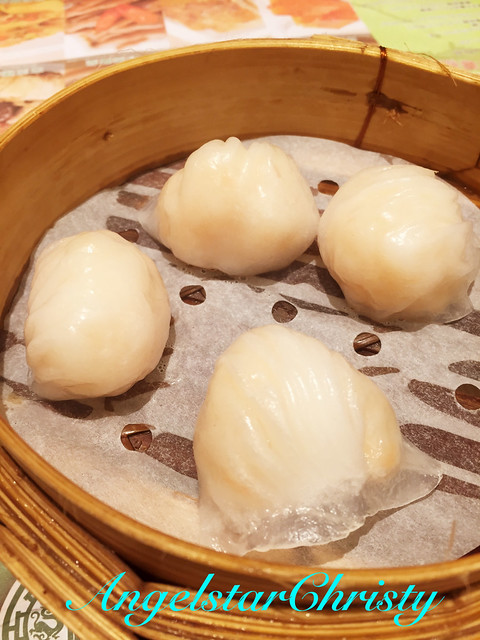
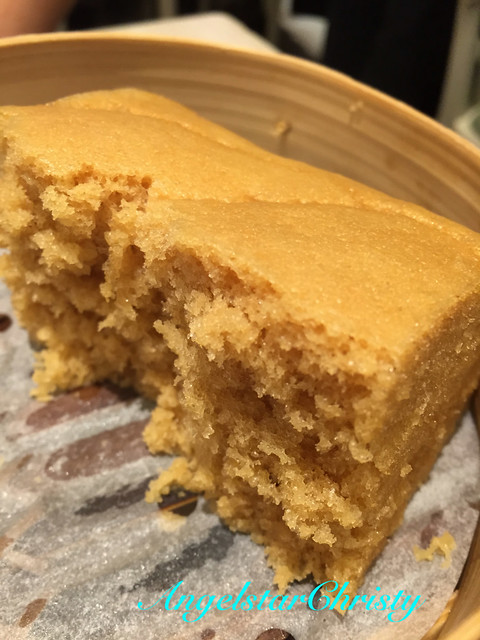
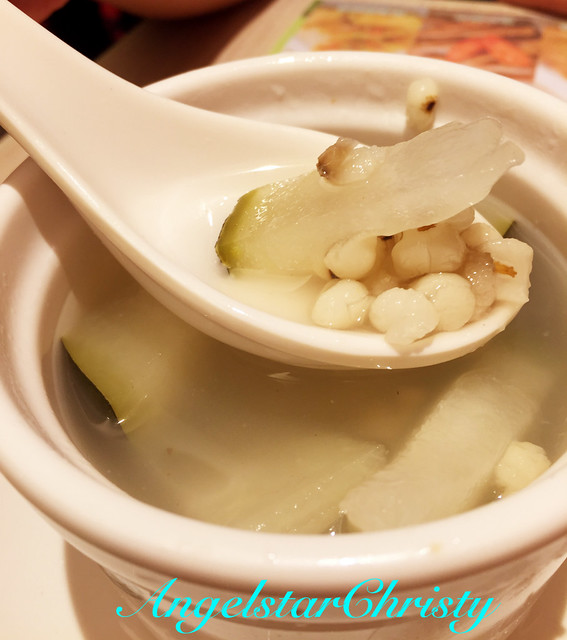
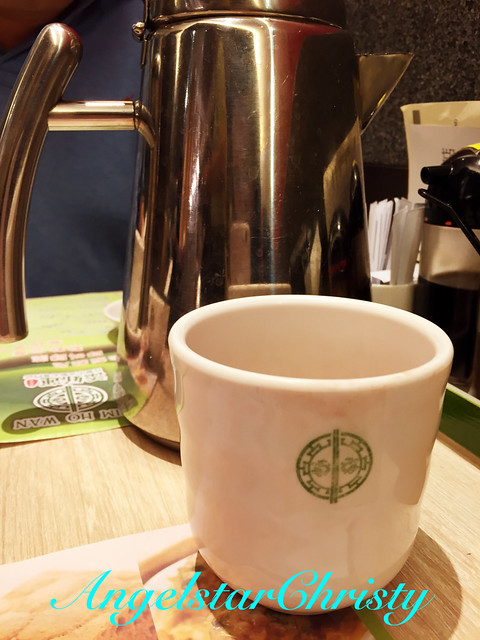


0 comments